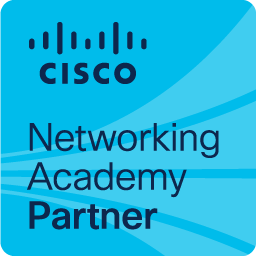- Teacher: Pavlyuk Dmitry
The course is offering knowledge, skills, and competencies for building applications in MuleSoft Cloud Infrastructure. It covers the following questions:API introduction, HTTP fundamentals: headers, methods, responses, Anypoint Platform and Anypoint Exchange, RAML, Restful API Modeling Language, and design API. The course also contains main software engineering activities, such as debugging, testing, deploying, and publishing, including API Security methods (authentication, SLA policies, etc.). Big attention is dedicated to the most popular Cloud Technology RDB (Amazon). Students will acquire skills to work with files locally and remotely, FTP, Salesforce, and SAP.
- Teacher: Biswas Rantu
- Teacher: Gorbunovs Aleksejs
- Teacher: Omar Youssef Yasser Moustafa Kamal Abdelm

The Cybersecurity and Data Protection course is designed for students who are interested in pursuing more advanced studies in the field of cybersecurity. This course provides an overview of the cybersecurity field. The curriculum explores the characteristics of and tactics used by cyber criminals. It then delves into the technologies, products, and procedures cybersecurity professionals use to combat cybercrime.
Cybersecurity covers foundation knowledge and essentials skills in all security domains in the cyberworld - information security, systems security, network security, mobile security, physical security, ethics and laws, related technologies, defense and mitigation techniques use in protecting businesses.
Upon completion of the course, students will be able to perform the following tasks:
- Describe the characteristics of criminals and professionals in the cybersecurity realm.
- Describe the principles of confidentiality, integrity, and availability as they relate to data states and cybersecurity countermeasures.
- Describe the tactics, techniques and procedures used by cyber criminals.
- Describe how technologies, products and procedures are used to protect confidentiality.
- Describe how technologies, products and procedures are used to ensure integrity.
- Describe how technologies, products, and procedures provide high availability.
- Explain how cybersecurity professionals use technologies, processes and procedures to defend all components of the network.
- Explain the purpose of laws related to cybersecurity.
![]()
- Teacher: Revzina Elena

Elements of AI is a massive open online course (MOOC) teaching the basics of artificial intelligence. The course, originally launched in 2018, is designed and organized by the University of Helsinki and technology company Reaktor. The course includes modules on machine learning, neural networks, the philosophy of artificial intelligence, and using artificial intelligence to solve problems. It consists of two parts: Introduction to AI and its sequel, Building AI. The course has been ranked the number one artificial intelligence course in the world on Class Central and Forbes.In 2019, the course won the global grand price in the Inclusive Innovation Challenge by MIT, the Massachusetts Institute of Technology.
- Teacher: Savrasovs Mihails
- Teacher: Gabelaia Ioseb
- Teacher: Mīķelsone Elīna
This course contains fundamentals about IT infrastructure's hardware, starting from cable ducts and supports, to structured cabling and finishing IT Racks and power distribution. At the end of the course you will be able to describe how datacenters are built, what kind of technologies are the foundation of IT Infrastructure, how dacatenters are being cooled and powered.
- Teacher: Peravoshchykau Vasil

- Teacher: Peravoshchykau Vasil